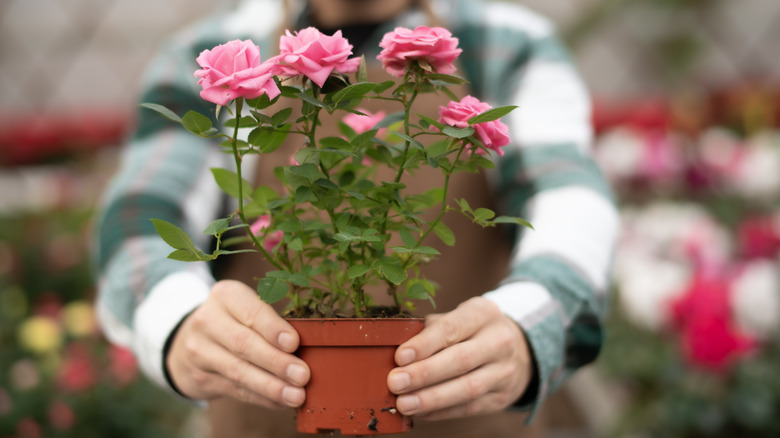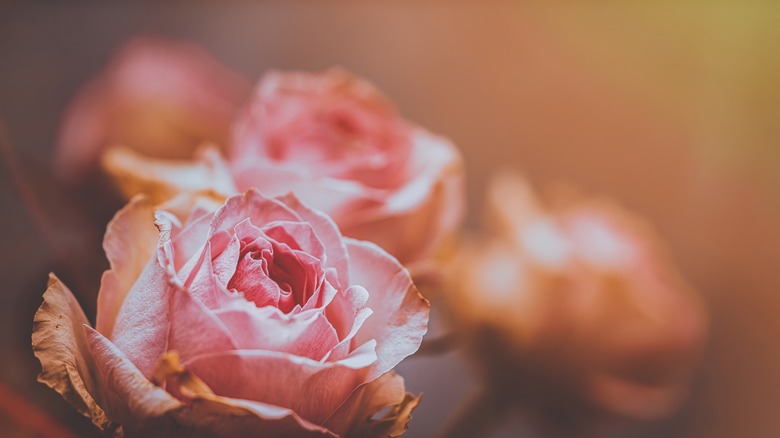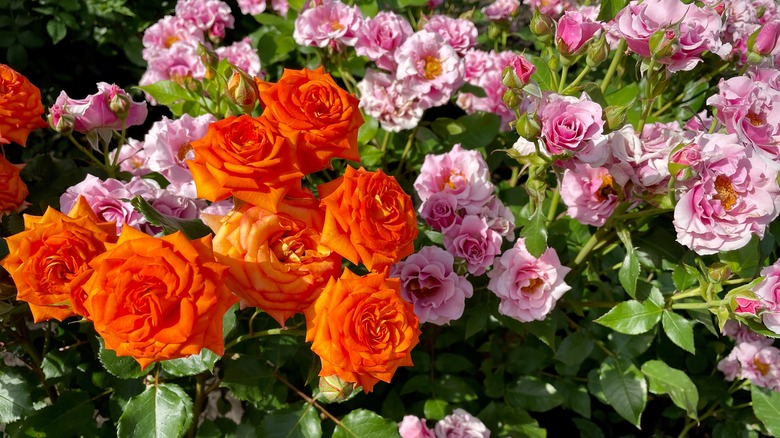What Is The Difference Between A Rose And A Spray Rose?
There is no doubt that roses are an all-time garden favorite. Perhaps the most widely known flower in the world, roses have a long history, from being used as gestures of love and romance, to acting as muses for artists, to culinary and medicinal uses. Surprisingly, there are more than 30,000 varieties of rose, coming in all sorts of colors, according to Kew Gardens. Spray roses and traditional roses are just two of hundreds of rose species to choose from. However, the main difference between your classic rose and a spray rose is the way it grows and blooms.
When choosing the right rose variety for your garden, there is a lot to consider. Are you growing them for cut bouquets, for beauty, or for fragrance? Spray roses tend to put out more blooms on a single stem than your traditional rose, which puts out one bloom per stem. The decision usually comes down to your personal preference, as well as the area of the world you live in. Your USDA plant hardiness zone, space, and light requirements are all important considerations when choosing the right rose variety for your garden. Furthermore, spray roses and traditional roses have a few key distinctions that are important to note before you get your next rosebush. Just make sure to consider the best time of year to plant roses before you take the leap.
Key differences between classic roses and spray roses
Classic roses, for the most part, put out one blossom atop a long, sturdy, yet thorny stem. Spray roses tend to have more flower petals and can put out up to five blooms on one small, dainty stem. Additionally, while the size of spray roses tends to be smaller, the bush tends to look fuller due to the presence of multiple blossoms with lots of small petals. Standard roses are the quintessential image of a rose. When you go to the grocery store and come across a bouquet of long-stemmed roses, odds are, you're looking at a standard rose.
Spray roses, due to their compact size, have smaller stems with significant flushes or "sprays" of blooms and are typically used as corsages, centerpieces, or other floral arrangements. They can also be sold as petite "sweetheart" roses in bunches at the florist, giving a smaller yet abundant rose experience than your standard roses. Standard roses, with long singular stems, are excellent for traditional bouquets, while spray roses tend to grow in small clusters, with miniature roses that can have up to 45 petals on each flower.
Choosing the right rose for your yard
Spray roses have gained a lot of attention due to their cute, compact size and ability to put out more blooms. Since they produce more blooms per stem, they're a great centerpiece (or accent piece) in the garden and useful for DIY floral arrangement projects. As a petite version of a standard rose, they add an element of interest and a darling cottage vibe to your garden.
Additionally, spray roses tend to have a longer vase life than your traditional roses, making them great for unique floral arrangements and bouquets. With shorter, more fragile stems than traditional roses, however, they may not be ideal for an all-rose bouquet. Traditional roses also have thicker and more durable petals compared to spray roses.
In the garden, the standard rose tends to have a more dramatic and familiar effect. They're also frequently less expensive than spray roses since they are cultivated on a larger scale. Still, it often comes down to personal taste when selecting spray roses or traditional roses for your garden. If you can't decide, you can always choose both! That way, you get the best of both worlds and never have to choose between spray or traditional roses.


